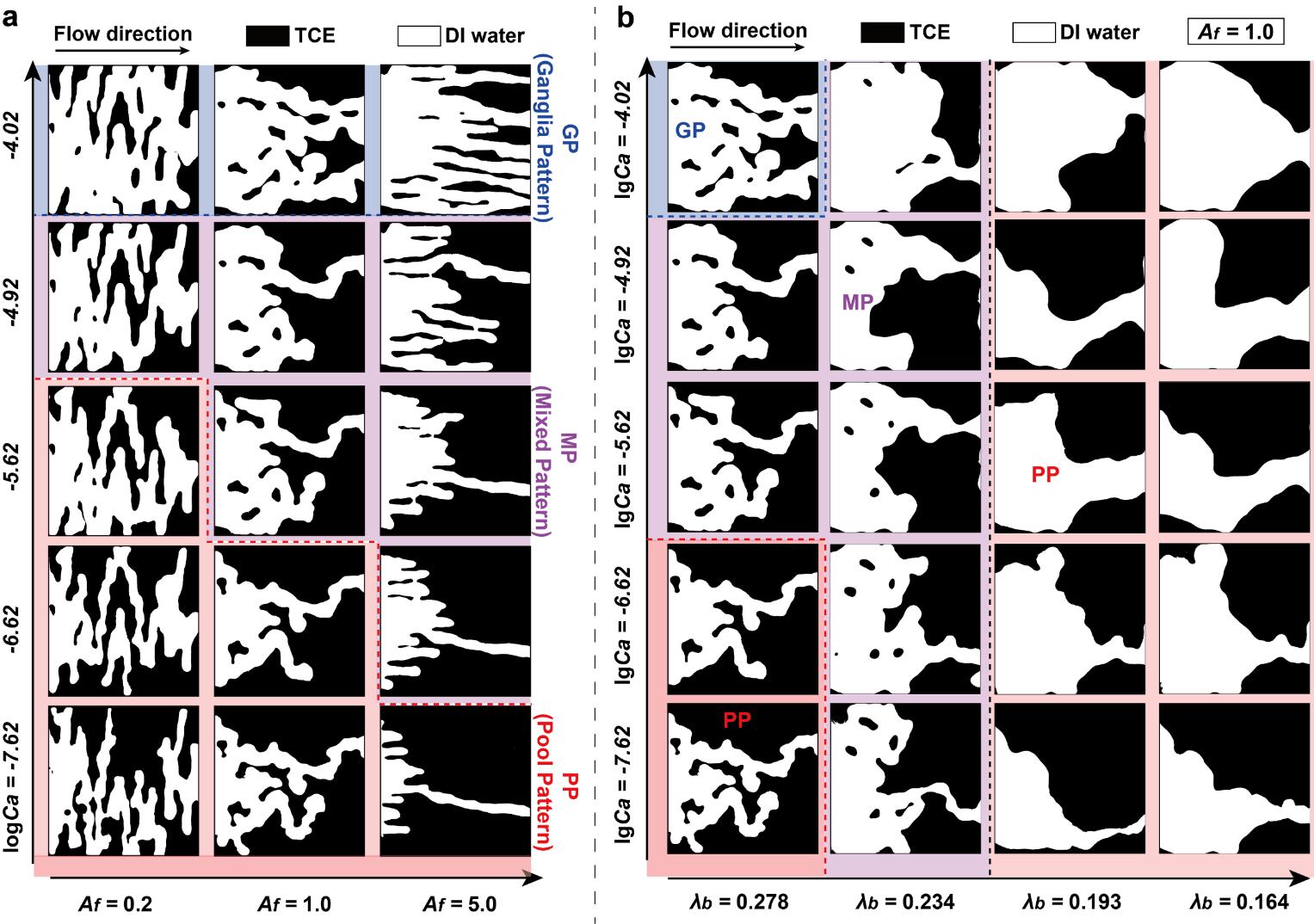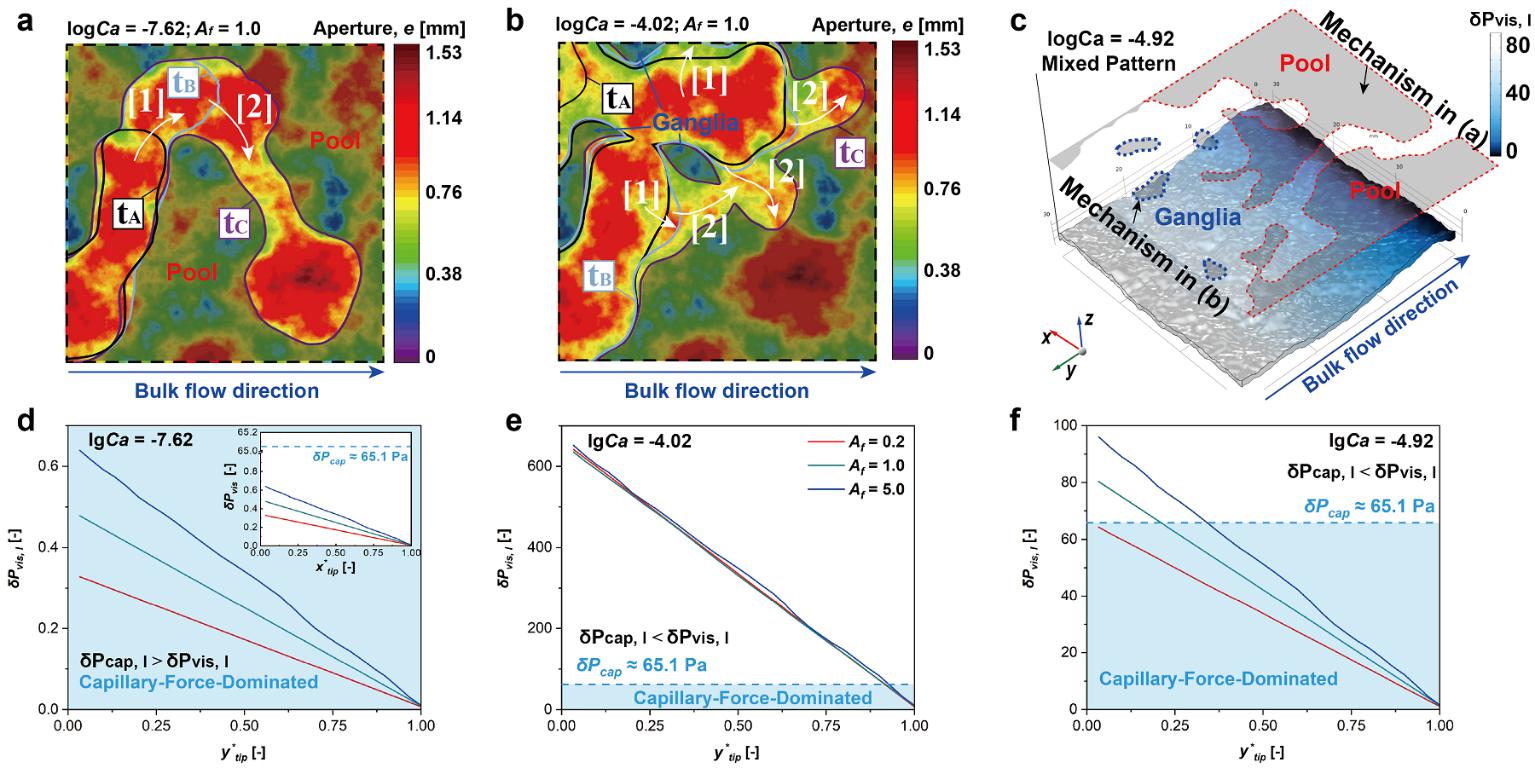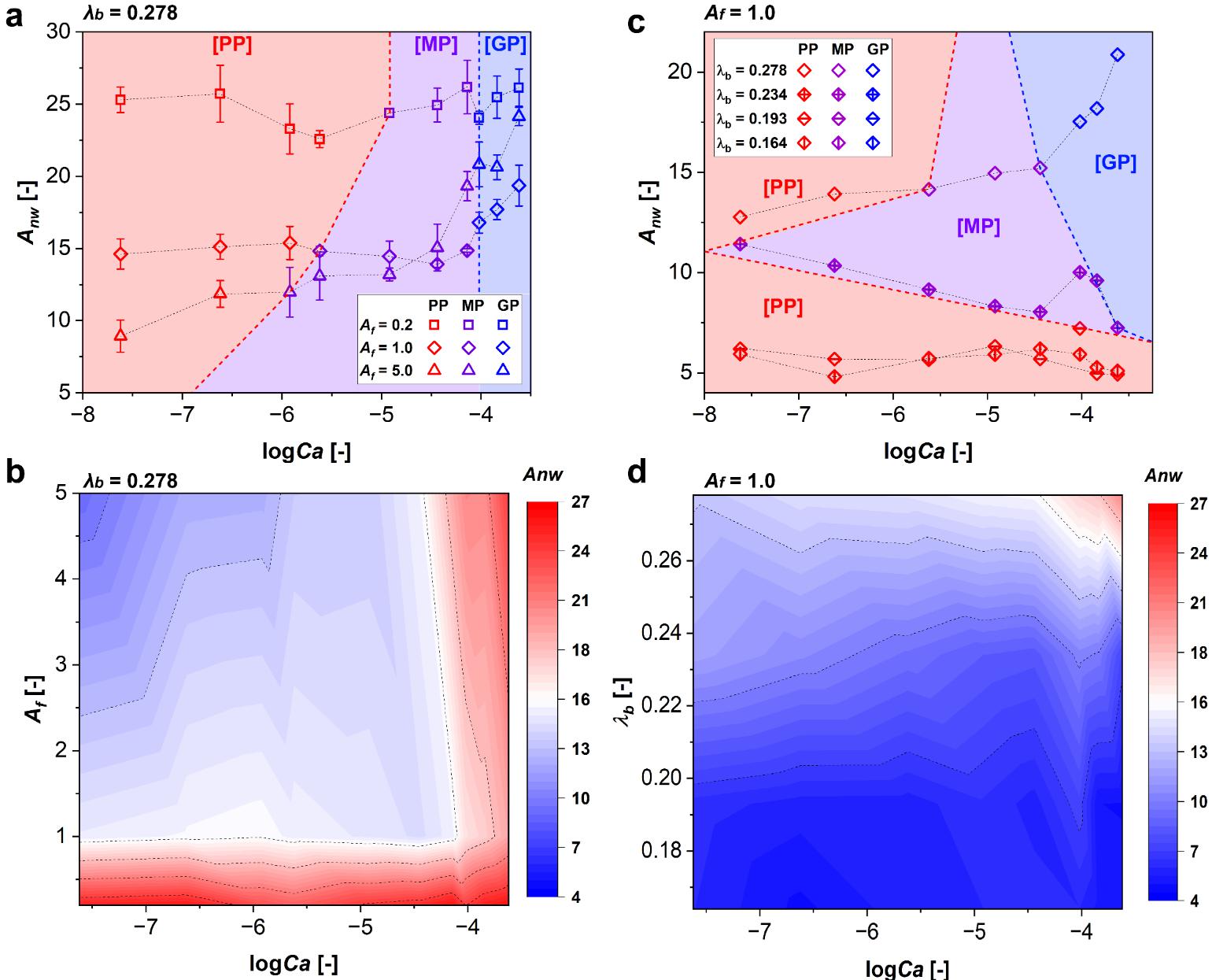Fractured bedrock aquifers are among the most widespread types of groundwater systems in China. With the rapid development of the petrochemical industry, the frequency of non-aqueous phase liquid (NAPL) leakage and contamination events has increased significantly. Due to their low solubility, persistence, and high toxicity, residual NAPLs in the soil-groundwater system can act as long-term, hard-to-remove pollution sources. These residual NAPLs slowly and persistently dissolve into groundwater, forming dissolved-phase contamination plumes that pose serious threats to groundwater quality and public health. A deep understanding of the architectures of residual NAPL source zones in fractured aquifers is thus essential for accurately predicting their dissolution and attenuation processes and for developing effective pollution prevention and remediation strategies.
Compared with porous media, fractured media exhibit much higher heterogeneity, which makes the NAPL entrapment process more complex and the corresponding source zone architectures more difficult to characterize. Many previous studies have focused on the formation mechanisms of NAPL source zones in porous media, revealing that residual NAPL primarily exists in two forms: (I) "ganglia" architectures trapped by capillary forces in micropores, and (II) "pools" accumulated on impermeable layers. However, studies on NAPL entrapment in fractured media remain limited. Although a few have explored NAPL behavior under capillary-dominated conditions, a systematic understanding of the coupled effects of capillary forces, viscous forces, and fracture aperture heterogeneity on NAPL entrapment is still lacking.
To address this gap, Prof. Xiaoqing Shi’s team at our institute developed a novel microfluidic visualization system tailored for fractured media to experimentally study the full process of water-NAPL displacement, entrapment, and dissolution (Figure 1). Their research reveals the formation mechanisms of residual NAPL source zones under the coupled effects of viscous forces and heterogeneous fracture aperture fields. At the microscale, different displacement conditions lead to three distinct structural patterns of residual NAPL source zones: Pools Pattern (PP), Mixed Pattern (MP), and Ganglia Pattern (GP) (Figure 2).
PP (Pools Pattern) forms under capillary-dominated displacement. In this regime, water with low viscous pressure bypasses zones with high capillary entry pressure or small apertures, leaving behind un-displaced NAPL pools.
GP (Ganglia Pattern) occurs under viscous-dominated conditions, where water with sufficient viscous pressure invades the fracture through multiple fingers, displacing most of the NAPL. Only a small fraction of NAPL remains trapped in isolated ganglia by regions with extremely high capillary pressure.
MP (Mixed Pattern) results from a combined trapping mechanism. Upstream, viscous forces dominate, leaving ganglia-shaped NAPL behind. As the viscous pressure dissipates downstream, capillary forces become dominant, causing the formation of NAPL pools. Thus, both ganglia and pools coexist in MP (Figure 3).
This study further demonstrates that fracture aperture heterogeneity—including anisotropy and roughness—and flow velocity are two key factors jointly determining the competition and evolution of these three structural patterns. The results provide an experimental foundation for accurately characterizing residual NAPL source zones in fractured media and offer theoretical support for future modeling of NAPL dissolution and long-term contamination assessment in fractured aquifers.

Figure 1. Residual NAPL architectures in single rough fractures. (a) Microfluidic experimental results of the first set of fractures (fractures with varying aperture field anisotropy (Af), same average aperture (ea = 0.79 mm) and roughness (λb = 0.278)) under different flow rate (Ca) and (b) the second set of fractures (fractures with varying fracture roughness (λb), same aperture field anisotropy (Af = 1.0)) under different flow rate (Ca).

Figure 2. Mechanism investigation of residual NAPL architectures. (a) NAPL entrapment under log10Ca = -7.62. The background color scheme represents the aperture field; The outlines represent the invading water finger; black represents time tA referenced in Figs (a) and (b), blue time tB and purple represents time tC; The events [1] and [2] indicate the displacement behavior from tA to tB and from tB to tC respectively. (b) NAPL entrapment under log10Ca = -4.02. (c) Simulated viscous pressure field with residual NAPL architecture of microfluidic experiments (log10Ca = -4.92). (d) Variation of local viscous pressure drop (δPvis, l) during displacement process under low flow rate (log10Ca = -7.62), (e) high flow rate (log10Ca = -4.02), and (f) the intermediate flow rate (log10Ca = -4.92). Here the local capillary force (δPcap, l) is estimated by average aperture ea, δPcap, l = 2σcosθ/ea, and δPvis, l are calculated from numerical simulations of the first set of fractures.

Figure 3. Effects of aperture field heterogeneities (roughness and anisotropy) and flow rates on residual NAPL architectures and the corresponding NAPL-water interface length(Anw [-]). Variations in Anw under different residual NAPL architectures in the first set of fractures (a), and the second set of fractures (fractures with Af= 1.0 is chosen as example) (c). Influence of aperture field anisotropy (Af) (b) and roughness (λb) (d) on Anw.
The above research has been recently published in the Nature Index journal Geophysical Research Letters under the title "Residual NAPL architectures in fractures: insights from microfluidic experiments" (DOI: 10.1029/2025GL114826). Doctoral student Kun Xing is the first author, with Prof. Xiaoqing Shi serving as the corresponding author. Nanjing University is listed as the first affiliation.
Collaborators on the paper include Prof. Zhibing Yang from Wuhan University, Prof. Liangchao Zou from KTH Royal Institute of Technology in Sweden, Prof. Amalia Kokkinaki from the University of San Francisco in the United States, and Prof. Jichun Wu from Nanjing University.
The study was jointly supported by the National Key Research and Development Program of China (Grant No. 2022YFC3703101) and the National Natural Science Foundation of China (Grant Nos. 42472318 and 42272276).
Citation: Xing, K., Shi, X., Kokkinaki, A., Yang, Z., Zou, L., Wu, J. (2025). Residual NAPL architectures in fractures: insights from microfluidic experiments. Geophysical Research Letters. https://doi.org/10.1029/2025GL114826

